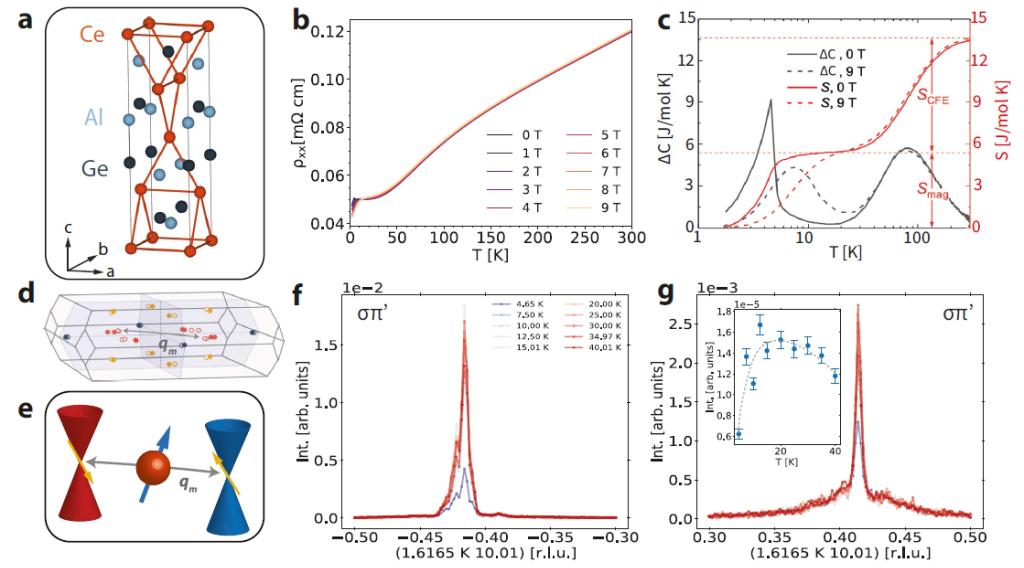Recently, Dr. Luo Xi published a research achievement titled “Topology Stabilized Fluctuations in a Magnetic Nodal Semimetal” in Nature Communications as the first author. USST was the fifth unit. Prof. Yu Yue and Prof. Li Mingda, MIT, were the corresponding authors. This is the first time that a teacher from College of Science has published a paper in Nature Series.
The interplay between magnetism and electronic band topology enriches topological phases and has promising applications. However, the role of topology in magnetic fluctuations has been elusive. Here, they report evidencefor topology stabilized magnetism above the magnetic transition temperature in magnetic Weyl semimetal candidate CeAlGe. Electrical transport, thermal transport, resonant elastic X-ray scattering, and dilatometry consistently indicate the presence of locally correlated magnetism within a narrow temperature window well above the thermodynamic magnetic transition temperature. The wavevector of this short-range order is consistent with the nesting condition of topological Weyl nodes, suggesting that it arises from the interaction between magnetic fluctuations and the emergent Weyl fermions. Effective field theory shows that this topology stabilized order is wavevector dependent and can be stabilized when the interband Weyl fermion scattering is dominant. Their work highlights the role of electronic band topology in stabilizing magnetic order even in the classically disordered regime.
Their observations in several experimental probes (REXS, electric and thermal transport, and dilatometry) collectively point towards the presence of nanoscale magnetic domains above the thermo-dynamic magnetic transition temperature. They develop a theory which proposes that these magnetic fluctuations are stabilized by the coupling between Weyl fermions and local magnetic moments in CeAlGe. Other recent experiments in geometrically frustrated materials have also highlighted the prominence of magnetic fluctuations and their impact on transport14, 38 . While these studies focus on the role of lattice geometry in fluctuation stabilization, the model we develop highlights the role of k-space topology. The development of time-resolved X-ray scattering measurements such as X-ray photon correlation spectroscopy39,40 may help further elucidate the nature of these fluctuations by observing their temporal dynamics. Given the crucial role that magnetic fluctuations play in correlated quantum materials, such as in unconventional superconductors41 and light-driven order42, they anticipate broader responses to arise from the interactions between magnetic fluctuations and electronic band topology.

Link to the paper: https://www.nature.com/articles/s41467-023-40765-1


